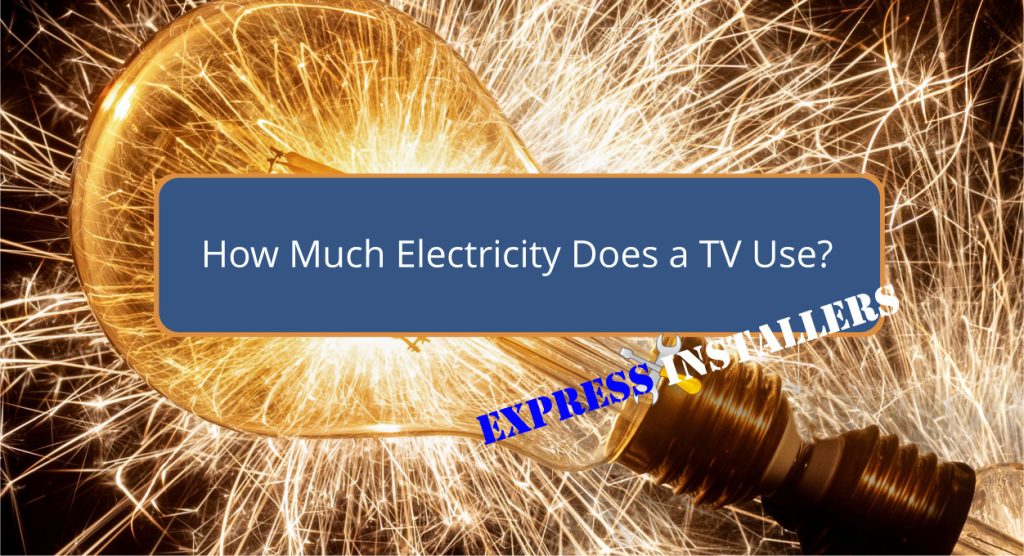
Your TV’s electricity use depends on its type and size. LED TVs typically consume 30-100 watts, while OLEDs are more efficient. CRT models can draw up to 120 watts, and plasma TVs may reach 500 watts.
To calculate energy usage, multiply your TV’s wattage by daily hours of use, then divide by 1,000 for daily kWh. Standby mode uses 0.5 to 3 watts, adding to your bill over time.
Adjusting settings and fully turning off your TV can save energy. Are you interested in further cutting costs and choosing a suitable TV?
Understanding TV power consumption is essential because different models consume an average of 50 to 200 watts of power. CRT TVs can use up to 120 watts, while plasma models may reach 500 watts.
In contrast, LED TVs typically range from 30 to 100 watts, making them more energy-efficient. To minimise environmental impact, consider energy-saving tips such as adjusting the brightness, enabling power-saving modes, and unplugging when not in use.
By opting for newer, efficient models like QLED or OLED, you reduce energy consumption greatly. This not only lowers your electricity bill but also helps in reducing greenhouse gas emissions, contributing to a healthier planet.
Efficient TV usage is vital for both your wallet and the environment.
Calculating your TV’s energy usage requires knowing its wattage and understanding how to convert that into annual kilowatt-hours (kWh).
Start by finding your TV’s wattage, then multiply by the hours used daily and divide by 1000 to get daily kWh. Multiply by 365 for annual kWh. To manage costs, multiply annual kWh by your electricity rate.
Here’s a quick table to illustrate:
| TV Wattage | Annual kWh Usage | Cost per Year (at £0.34/kWh) |
|---|---|---|
| 50 watts | 91.25 kWh | £31.03 |
| 100 watts | 182.5 kWh | £62.05 |
| 150 watts | 273.75 kWh | £93.08 |
Energy-efficient models and energy-saving tips can greatly reduce your energy bills. Always consider these factors when comparison shopping.
Standby energy use in modern TVs, ranging from 0.5 to 3 watts, might seem negligible but can add up to around £12 annually. Even when your TV is off, it’s still consuming power in standby mode.
To understand the impact, consider the following:
Reducing your TV’s energy use involves simple yet effective strategies that can lower your electricity consumption. First, turn off your TV entirely instead of leaving it on standby mode; this can save significant energy.
Adjust the brightness and contrast settings to conserve power without sacrificing picture quality—Utilise energy-saving features like eco-mode and auto-brightness control.
Consider purchasing an energy-efficient TV or opting for a smaller TV size for more substantial savings. Use a power strip to easily disconnect all TV-related devices when they’re not in use, preventing standby power consumption.
These energy-saving tips fit seamlessly into green living strategies, helping you minimise your environmental footprint while saving on electricity costs.
Understanding the cost of running a TV involves analysing its energy consumption, which varies considerably based on factors like screen size, type, and resolution.
An average 48 to 50-inch TV in the UK costs around 45p per week in electricity.
To minimise expenses, consider these factors:
These steps help you manage and reduce the cost of running your TV.
The cost of running a TV for one hour hinges on its power consumption and energy efficiency. A 100-watt TV typically costs about 1.5 to 2 pence per hour, varying by electricity rates.
Your TV’s daily consumption varies based on TV wattage and usage. A 55-inch LED TV typically uses 1.5 kWh daily, while a 32-inch LCD TV consumes around 0.5 kWh. Adjusting settings can further reduce consumption.
To calculate the cost, consider the TV’s energy consumption. Multiply the wattage by the hours used, then by the electricity rate. Typically, it costs £0.40 to £1.00 per day, adding up to £10-£25 monthly.
Smart TVs can consume significant electricity due to their features. Their power consumption ranges from 20 to 250 watts. However, energy efficiency settings can mitigate this, making them more power-conscious than traditional models.
You now understand your TV’s power consumption and how to calculate its energy usage. Don’t overlook standby energy use, as it adds up over time.
Implementing energy-saving practices can significantly reduce your electricity bill. By being aware of these factors, you can make informed decisions to optimise your TV’s energy efficiency.
Ultimately, this knowledge empowers you to save money while minimising environmental impact.
Mon-Fri: 24 Hours
Sat: 24 Hours
Sun: 24 Hours